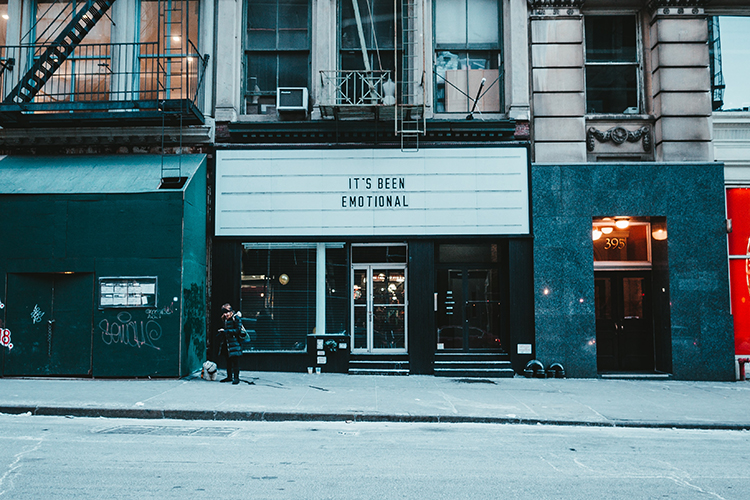
Emotions and the City
Call for Submissions
closing 15.06.2021
Emotions play a role in the way we see, inhabit and build cities. Whenever we avoid walking through dark parks at night, design uncomfortable benches to scare homeless people away, cheer or suffer collectively at the city’s football stadium or when we get desperate about the impossibility to move within a city of constantly rising rents, emotions are part of the social and physical landscape and the way we consume and produce urban spaces and places.
But emotions are not only subjective experiences, private anecdotes or personal memories. They are also political and an expression of power relations and inequalities. For instance, when we ask who ‘belongs’ in our neighbourhood, who feels at home and who feels out of place. Or when some groups in the city are labelled as particularly fearsome and threatening and are more often subject to control and policing. The question of emotions and power are also central to protest and resistance in cities. Social movements that bring their claims to the street, do not only challenge the social order, they also question existing rules about who is allowed to feel how and where in the city.
Urban planning is shaped by emotions, too. Fear of floods, pandemics, raids or terrorist attacks led city planners to build sewerage systems, erect walls or install modern surveillance technologies. Public lighting emerging in the 17th and 18th century also served to reduce the fear the power elite had of gatherings and urban riots. Thanks to oil lamps and later gas lanterns it was possible to control even smaller alleys.
Ultimately, cities are also sites of collective joy and excitement. Whether in clubs, mosques, pubs, stadiums or playgrounds, here people come together, discover new things and at times find important emotional support. Just how vital these places are for our mental well-being is something the COVID-19 restrictions are making us painfully aware of.
The journal is calling for contributions that look into the often neglected relationships between emotions and cities. How do emotions shape the urban and how does the urban shape our emotions? Exploring emotions and how they move people and move around in (urban) space can tell us much about how cities work and for whom. Which emotions are heard, justified, elicited, invited and which ones are not? How may they be expressed, where and by whom? What role does the physical and material space play in how we become emotionally involved and attached? And finally, how can emotions help us better understand our cities and the way we organise, design and inhabit them?
Deadline for submissions: 15 June 2021, 23:59 London time
The deadline is for submissions of near-complete work. For works that are less complete, but fit well with the call’s theme, abstracts will also be considered. These should be submitted no later than six weeks before this deadline to allow for an initial screening and further development so that the near-complete work can still be submitted by the deadline. No prior abstract submission is required should the near-complete work be submitted by the deadline.
We publish work in a variety of formats and media bringing together peer-reviewed research, design and policy proposals, activist and community voices, visual arts and creative writing, in a critical and analytical discourse on the city created by the strength of a diversity of perspectives from the Global North and the Global South.
Guidelines for submissions:
https://journal.urbantranscripts.org/submissions/
By submitting your work to The Urban Transcripts Journal you agree to our policies with regards to open access, free publishing, reviewers community participation, submissions review processes, plagiarism, copyright, licensing and archiving.
+
Image notes: Photo by Claudio Schwarz | @purzlbaum on Unsplash
Volume 4, no. 1 Spring 2021
